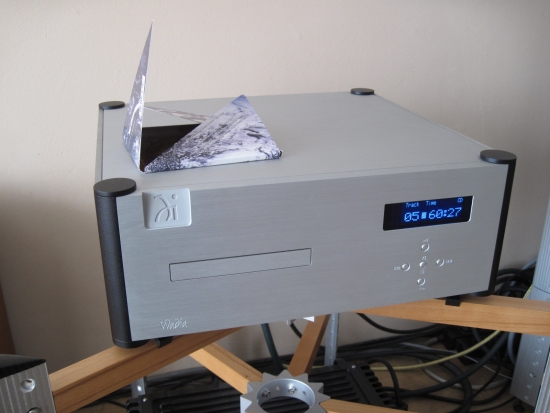
Wadia S7i is compared to the Wadia 861, PS Audio PWD MKII, and Linn Klimax DS/0
The S7i is Wadia’s current integrated CD player range-topper. Dutch distributor Audiac loaned it to me for an extended period, enabling me to run various comparisons.
Most prominent on my list was to see how it would compare to the previous range-topper, the Wadia 861. Secondary to this test was another comparison to the world’s current best streamers: PS Audio PWD and Linn Klimax DS/0.
For a change, this time I’ll start with a short introduction for the S7i, and then proceed to the listening tests. Don’t worry: I’ll keep it generic and brief because the technical details can be found on various other sites and sound quality is always what counts most for me.
Above is the entire setup at the time of review with on the top left the S71 and top right the 861. Differences include a smaller display for the S7i but with bigger text, albeit in a bright blue, that’s still difficult to read from my listening position. Further, the corner pillars are in a darker grey, and the Wadia logo is now engraved instead of painted on. So far the cosmetic differences. Inside, however, it is a different story altogether.
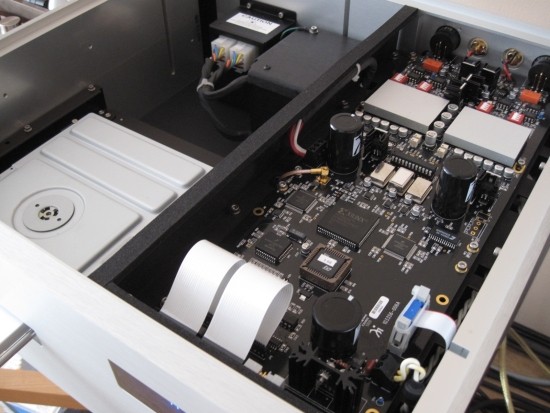
Familiar neat and tidy Wadia build in the S7i with a DAC section that holds some resemblance to earlier models, but shows some neat new tricks nevertheless, such as independent cinch/XLR output level control via dipswitch, Wadia-branded capacitors and interesting-looking, secretive grey slabs of aluminum near the output stage. Under the board, you see here is the separate digital input/output board. To the left is a more empty space than before, because instead of the big VRDS transport there is now a StreamUnlimited CD-Rom drive.
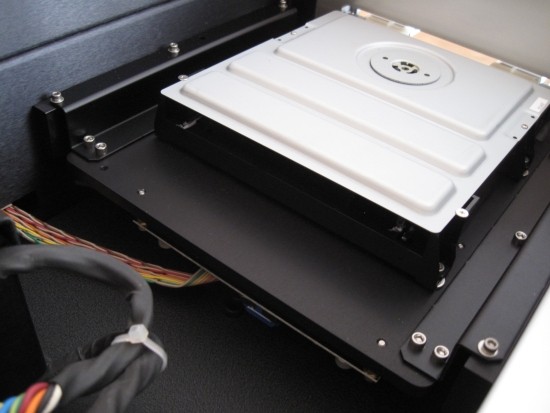
A simple drive it may be, but it is built-in with elaborate care. Also, it is said that Wadia have done a great deal to maximize signal transfer and minimize jitter. And indeed, despite the CD Rom transport, the S7i really sounds like a Wadia should: big, bold and dynamic.
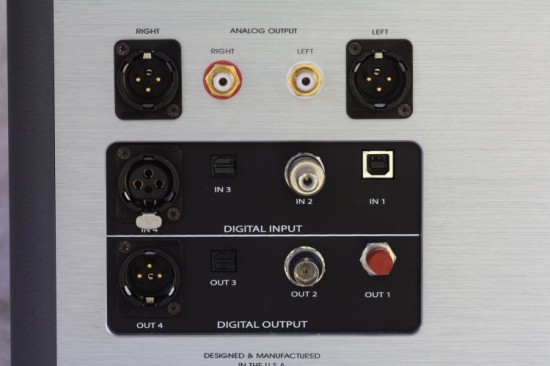
Like the 861, the S7i has plenty of inputs and outputs, trading the ST input for a synchronous USB input. Below: the drawer is better than you’d expect from a CD Rom drive.
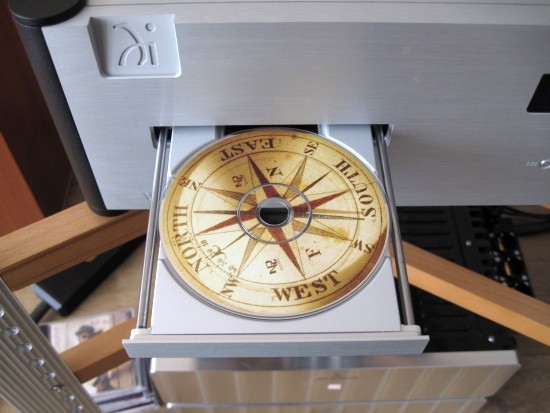
Wadia house sound
Both the S7i and the older 861 have the same familiar Wadia house sound. It is so distinctive that I think I could even recognize a Wadia player blindfolded when comparing various players, even in an unfamiliar room. The Wadia sound has always been focused on robustness: a solid foundation, lots of energy, a lifelike, coherent, highly dynamic midrange with splendid acoustic qualities and state-of-the-art soundstaging capabilities. Especially the integrated players (or separates with clocklink) excel in soundstage width, depth and layering. Voices and instruments really are spread out between and in front of the speakers, in multiple layers, not just as a cut-out, holographic kind of way.
The one downside to all these benefits has always been a dry and darkish treble, which ultimately made me look to other players. Still, every time I hear a Wadia I can’t help but to have deep respect for this brand for sticking to their ideals and not deviating from them even over the course of years. Everytime I compare a Wadia to any of my other resident players (the Levinson 390s is currently my favorite) it is clear that the Wadia ideals aren’t found to this extent in any other players. Fluid, smooth and refined the Levinson may be, and its soundstage is also very big, with good focus, but lacking the Wadia’s layering, and it certainly can’t beat a Wadia for bass solidity and sheer life-like-ness. But I’ve written enough about those comparisons elsewhere on this site. For this review, I want to focus on the differences between the Wadia S7i and the older Wadia 861. While doing that, I’ll also make a side-step to comparisons with two streamers: the Linn Klimax DS/0 and PS Audio PWD MKII.
Comparisons
Naturally for this comparison, I kept all circumstances the same, which means that all players were well-warmed up, set up on the same Spider Racks, connected with the same type and length of power cable that was even swapped halfway through, to make sure we weren’t hearing the influence of the position in the extension block and attribute it to the players. The interlink was the very same one, swapped from component to component, thereby eliminating differences caused by the different sounding inputs of the preamp or small differences between the cables due to differences in length.
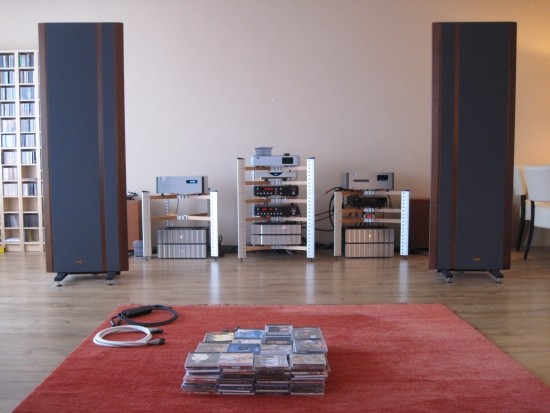
Wadia 861
The 861 has the fullest bass and warmest, most organic midrange. The bass is less articulate, fast and dynamic than that of the S7i and can be overwhelming, even on the fat side, if the player isn’t set up perfectly. That means preferably on a Spider rack, on ceraballs. But as mentioned, for the initial comparisons, I kept everything the same for all players. The 861 may have the biggest bass, it is also the least dry of the bunch. Its midrange is glorious and colorful, its treble on the dark side (as for all Wadias), but fluid and smooth. Also, the 861 is most forgiving for badly mastered CDs. The 861 isn’t the most “impressive” player but it is the most romantic Wadia player I have heard yet, reminding me a lot of how the 27ix GNSC DAC sounded. The 861 needs to be powered from the first position in the extension block and can use open-sounding interlinks. I used Transparent Ultra and Cardas Hexlink Golden 5C to great effect.
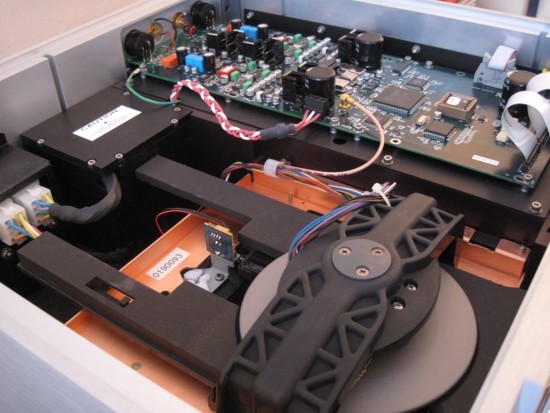
Above is the Wadia 861 with the distinctive TEAC VRDS transport.
Wadia S7i
The S7i, although also immediately recognizable as a Wadia, does have a different sound than the 861. It is faster, tighter, fresher. Also, its treble is more open and airier than that of the 861. In fact, it is the most open treble I have heard from a Wadia thus far. Still, the treble is smooth, without hard edges. This is a common misunderstanding when people think that Wadia’s sound unforgiving or hard. Their sound is just very solid and robust, and very well-defined, but I haven’t once heard brittle treble from a Wadia when it wasn’t in the recording. Sure, it isn’t as velvety and super-airy as the Levinson 390s or the Linn Klimax DS, to name a few. But compared to many other players, the Wadia trademark treble just can’t be faulted, even if the S7i, too, shelves off a tiny little bit toward the upper end. This more pronounced treble and midrange does make the S7i a little less forgiving of bad recordings though, but with the majority of cd’s the balance was just right. The bass can be a little bit on the dry side but it is highly articulate and makes for incredible PRAT, much more so than with the 861. Also, in spite of the use of a CD-ROM drive, the bass doesn’t lack bite or body. In fact, the bass is just spot-on and it is one of the causes for this player to sound as good as it does. The solidity of the bass and midrange makes for a wholly believable, natural, acoustically real-sounding presentation. While the 861 does more or less similar things, I’d say that the S7i is better for dynamic, rhythm-driven music and the 861 is better for smooth, easy-going music. The S7i’s midrange is comparable to that of the 861, but a touch thinner and less organic. Soundstage-wise I couldn’t tell much difference between the two players. Perhaps the S7i is a little more focused. Overall resolution is comparable, but because the S7i sounds more open, it can appear to have greater resolution. On balance, the S7i strikes me as a very well-balanced player that doesn’t paint a rosy picture but neither sounds overly analytical. Strike that, the S7i isn’t analytical at all. It just sounds right, like music, and like the cd you just put in. Beware: after listening to the S7i for too long, other players start to sound unexciting and dull, even my beloved Levinson 390S sound less convincing and real. The S7i profits from warmer sounding cables and unlike the 861, its position in the power extension block doesn’t have to be all the way in front. Transparent Ultra worked well, but I reckon that a warmer-sounding cable such as Cardas Golden Reference would make an even better matching interlink for the S7i.
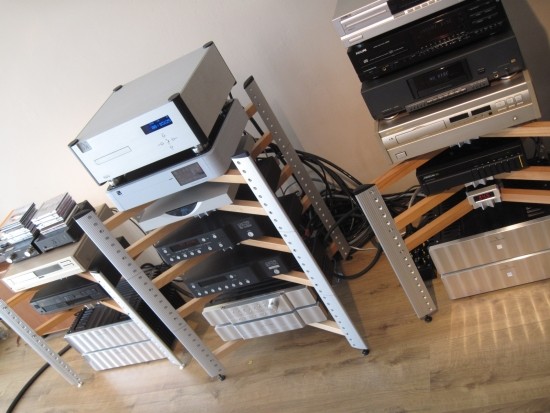
Above is the Wadia S7i, disrespectfully placed on top of the PWD during a listening test of some old Philips CD players, which is another hobby of mine, but not related to this test.
PS Audio PWD
Although the PWD is a network player, not a cd player, still I wanted to include it in these tests, because, let’s face it: the world is changing. Us audiophiles may not like it, but CD is on its way out, more or less. Or at least for the big masses, it is. The PWD can be considered to be one of the best streamers in the world and after I had updated it to MKII status, indeed I can only testify that it is. The comparison with both Wadias made a very good point in case. The PWD, amazingly, has even better soundstaging capabilities than both Wadias, being both larger in size, better layered, and more focused. Its bass is also in a league of its own, being fuller, deeper, and more powerful than that of the S7i but less overwhelming and potentially slow than that of the 861. Best of both worlds, basically. The PWD has unbridled enthusiasm, even challenging the S7i on that terrain. Because of its fulness and superb rhythm, sometimes, the PWD sounds more engaging than the S7i, which, by comparison, can sound a little lean or matter-of-fact. Still, the S7i is more organic, more real than the PWD. The PWD’s treble has improved a lot after the MKII upgrade and it is now on par with many players. But in this company, it is clear that its treble is still a little bit rough and has slightly less resolution than the Wadias. The 861 incidentally, is a lot darker than the PWD, while the S7i is more or less on par for openness. Like the S7i, the PWD sounds excellent with well-recorded CDs, but it can also reveal flaws and is less forgiving for badly mastered recordings. The PWD has a huge power supply and perhaps because of this, it is less sensitive to power conditions. Sure you can hear differences in power cables but it is happy to be fed by a variation of cables, and it doesn’t need to be in the front position of the extension block. On the contrary: it benefits from the added smoothness of components before it in the chain and it doesn’t lose speed or dynamic power. Furutech Alpha 3 with gold-plated Furutech connectors made for the best results. Interlinks, too, can be warmer sounding types but I have nice synergy with Transparent Ultra. On balance both me and the owner of the 861 agreed that the PWD falls smack in the middle of both Wadias. It performs in the same league and the differences that are there can be considered a matter of taste. The music it produces is consistently engaging, in fact, sounding much like a Wadia. Not the most refined in the world then, but hugely enthusiastic.
Does this make the PWD the overall winner? Well, in the streamer category as far as I am concerned it joins number one position together with the Linn Klimax DS/0. But I can’t say that the PWD entirely beats the CD players, too. It doesn’t play CDs, nor does it playback ripped CDs, as well as the best CD players, play CDs in native form. Even though these CD players can’t compete with the PWD on its best aspects, both Wadia and Mark Levinson still excel in organic presentation. You get the feeling that you’re listening to real, breathing people, not recordings. But it really surprised me that the PWD managed to beat both Wadias in terms of bass solidity and soundstaging.

Linn Klimax DS/0
There are two qualities that make the DS stand out. First, the utter smoothness and fluidity. If the DS has grain, then it must be so small that we can’t hear it, much like we can’t see pixels on an Apple Retina display anymore. And indeed: the DS is smoother and more fluid than all other contenders in this test. Second, is the amazing low-level detailing. It is almost like listening to a high resolution 24bit/96khz source, so continuous and finely resolving that it is in that aspect highly analog-like. And again indeed: for these aspects too, the DS cannot be beaten. But in comparing to the other contenders it also becomes clear that the DS is not perfect. For on it lacks dynamic differentiation and PRAT. It seems as if it is always the perfect gentleman and it just doesn’t want to move faster or shout. Not even if you push it. Dynamic-wise it seems as if all sounds are at the same macro-level. Mind you, micro-dynamically the DS is the best I’ve heard, but it just doesn’t really engage as much as the Wadias and the PWD, especially with more rhythm-driven music. Focus on itself is good, neither better nor worse than the other players in this test. But the differences lie in soundstaging and imagery, which for the DS is good: unforced, not shouty and forward nor laidback. It grows beyond the speakers, mostly to the sides, not as much toward the listener. It is not impressive but again very natural. Switch to one of the Wadias or the PWD however, and it’s like the room just got twice the size. With the DS there is something like a bubble around the speakers, but with the Wadias and PWD you’re presented with layer upon layer upon layer. All of a sudden instruments and voices have their own unique positions in the stage, subtly layered next to and in front of each other. Also, there is much more distinction laterally, between the listening position and behind the speakers. This makes for a very engaging listen, even if the Wadias and PWD cannot match the DS’ utter resolving power. But what speaks for the DS again is its extremely natural tonality. Its midrange is spot-on, neither creamy rich nor thin, neither electronic nor hard in your face. Just extremely-natural. Its timbre is simply world-class. If it were dynamically a little more outgoing, it could beat Wadia for that aspect. But as it stands, sometimes the S7i or even the 861 are more life-like and seen acoustically more right, even if the DS has more color and nuance.
Mark Levinson no.390S
I’ve already written so much about the 390S that I will keep it short this time. As regular readers know, I find the 390S’s bass to be world-class. Now that I have had this player side to side with the Wadia S7i and 861, I can confirm that indeed the Levinson can hold up even when compared to the other bass champions in the world. Compared to the 861 the 390S is more fluid in the bass. It is just as thunderous and weighty but more flowing. The 390S’s treble is more open and airy than that of both Wadias, although the S7i comes much closer than any Wadia thus far. The 390S’s midrange is glorious: full, deep, smooth, with lots of meat on the bones. It is natural, but not as acoustically right as that of the Wadia 861, nor as open and articulate as that of the S7i. You could say that the Wadia’s sound more realistic through the midrange, but the Levinson is more forgiving. The 390S’s soundstage is big, deep and room-filling. But you only need to switch to the Wadia’s or the PWD shortly to hear that it cannot match these players’ differentiation, layering, and placement of individual instruments and voices. The 390S’ soundstage is a bit like that of the Klimax DS: a big bubble, in this case, a much bigger bubble, but still a bubble. Not as breathtaking as the soundstage champions then, but due to its sheer volume, still engaging.
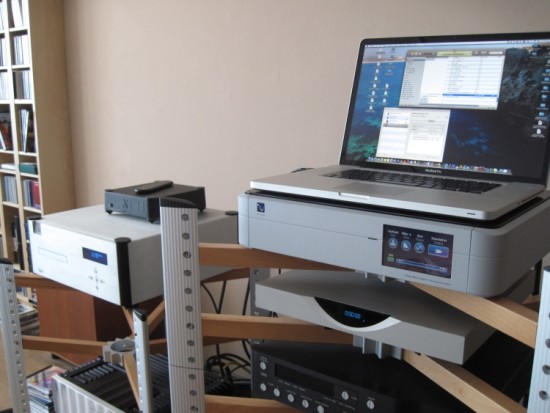
On the left, on top of the S7i you can see the Wadia 121 DAC. This is an early non-production sample of this new device. It offers all kinds of goodies, such as asynchronous USB input, clocklink input (word clock compatible), Wadia DigiMaster filtering, digital volume control, and much more, at a very low price. Also: it has very good sound, sounding like a real Wadia, with a well-defined soundstage and excellent focus. Once the production sample is ready, I will post an extensive review.
USB input
The Wadia S7i offers a USB input and this works well. The S7i is immediately recognized by the Macbook and plays without hiccups. The sound however isn’t on par with its CD replay by quite a large margin: although the bass is nice and tight and the whole is balanced and well-focused. the impression is of a business-likeness, and quite obvious is the Macbook-typical thinness, a certain flatness and lack of color, drive, and substance. That this isn’t entirely to be blamed on the Macbook was revealed by connecting the Macbook to the PWD MKII’s USB input, which resulted in a sound much closer to the Wadia S7i’s native CD-playing capabilities in terms of soundstaging, fulness, color, and sheer enthusiasm. Michael from Audiac informed me that the USB input on the S7i is indeed synchronous only. The USB input is useful and sounds more or less on par with USB inputs on other DACS. It’s just that I’ve been spoiled with the amazing USB sound on the PS Audio PWD.
S7i DAC with other CD transports
Used as a DAC, fed by a Meridian 506.24, Marantz CD11LE or Levinson 390S cd player, the S7i still recognizably sounds a lot like itself, but with more smoothness and fluidity, which is normally welcome, but these players also detract from the S7i’s normal strong suits, such as dynamics, bass heft and natural midrange. Perhaps if a Philips CD-Pro was used inside the S7i… perhaps that would’ve been interesting…;-)
S7i Transport capabilities
The Wadia S7i’s transport has been optimized for accurate playback and it shows. Using the S7i as a transport only into various DACs, it performs in a consistently tight, fast, dynamic, and lively manner. Compared to the Marantz CD11LE or Levinson 390S as transports, the latter two have more color and a smoother, more relaxed presentation that I favor. But in terms of quality, this is a matter of taste. The S7i functions well as a transport and as a DAC, but still, I prefer that S7i playing CD’s in an integral manner. This way it just sounds most involving.
Optimizations
The Wadia S7i’s dynamic and lively character makes it possible to use the player with wamer power cables and it has no problem being connected to a position more towards the back of the extension block. Likewise, interlinks may be the smoother type, although you won’t want to go overboard, smoothing over the S7i’s strong sides. Setup may work on various racks: the Spider rack may even be a little bit too neutral and I suspect that a weightier rack might work better.
The Wadia 861’s full tonality and especially its weighty bass can quickly turn to a thunderous, mushy mess if the player is setup incorrectly. The 861 doesn’t like being seconds in the power extension block. First place it demands, and nothing less. Also power cabling is critical: use a Belden and you lose much of the color that it is capable of, use a Harmonic Technology and you’re presented with a creamy same-ness with little dynamic differentiation. Thus far for my setup the best power cord for the Wadia 861 is a Lapp, with IeGO 8085 24k Gold connectors. Interlinks may be the fast and open type, but I preferred Transparent Ultra for their smooth, fluid treble yet articulate and fast character, combined with a full tonality. The 861 never sounded better than on a Spider rack, top level. This makes the bass more nimble and articulate and also gets the maximum from the otherwise slightly dark treble. I’d say that if you buy an 861, you owe it to yourself to also get a Spider rack. They’re still around second-hand, at good prices too.
Relative conclusions
Wadia 861
Best for timbre, color, and organic reality in the midrange, best for easy listening.
Wadia S7i
Best for rhythm-driven music, best for detail and openness. An exciting listen.
PS Audio PWD
Best if you want Wadia sound from a streamer. Best in terms of bass solidity and timing as well as for soundstage size and layering.
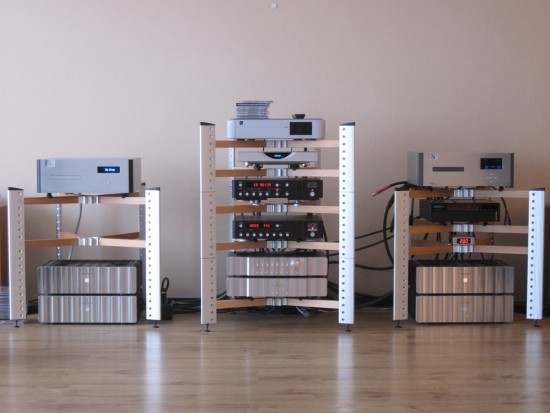
Overall Wadia S7i conclusion
The S7i is a genuine Wadia, despite the CD Rom transport. I have to say that this is quite an achievement, as I always thought that the VRDS transport was largely responsible for the characteristic robust Wadia sound. Turns out that it is slightly, but only in terms of bass fullness, and perhaps midrange color. The Wadia-typical bass-robustness, drive and power, are all present in the S7i. Another good thing about the S7i is that it doesn’t have to warm up each time when you haven’t played a cd for a while. Once warmed up, it is ready to rock. The best thing about the S7i is that it has the best treble for a Wadia product yet. It is open and detailed yet never aggressive. It can be dry, however, but this can easily be combatted with the right setup and cabling. Unlike the Wadia 861, the S7i is much easier to implement in various systems and it is my estimation that many people may find this model more to their liking than earlier Wadias.
More Wadia Reviews
Wadia 12
Wadia 25
Wadia 26
Wadia 27ix GNSC
Wadia 171i
Wadia 121
Wadia 861
Wadia 581
Wadia 781i

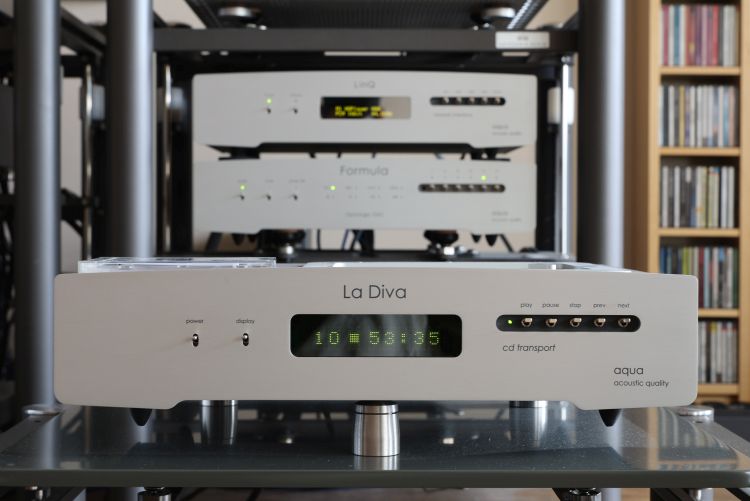
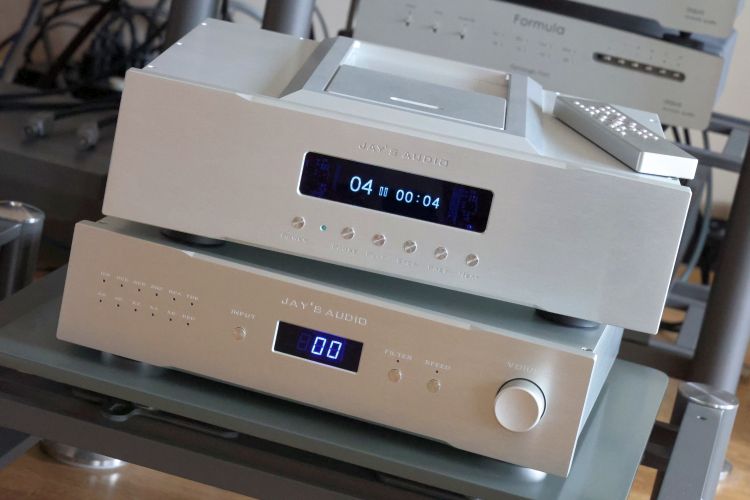
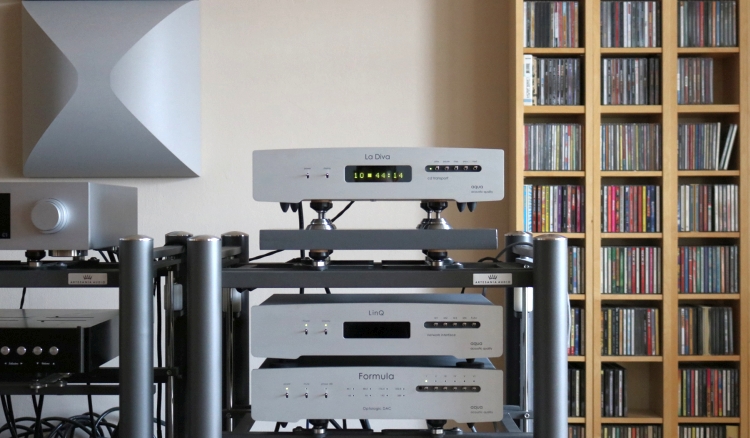
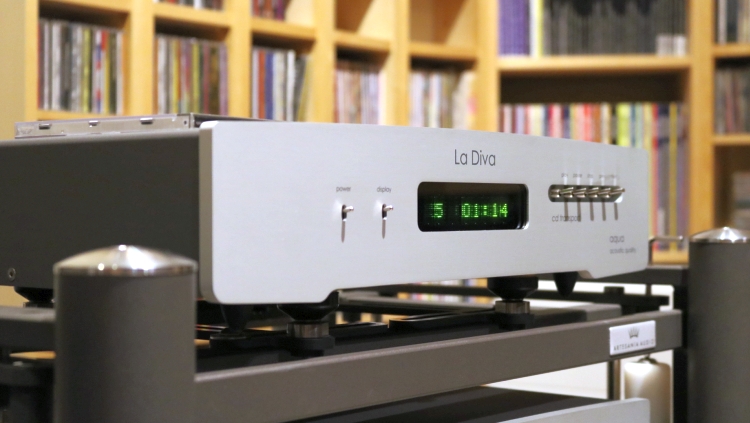
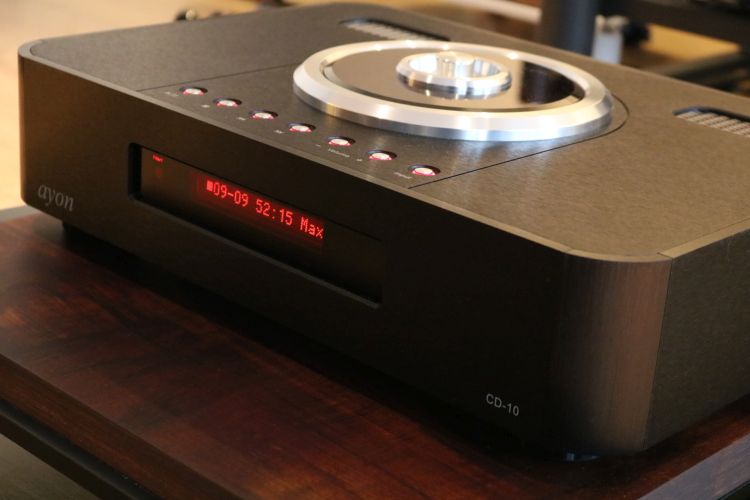
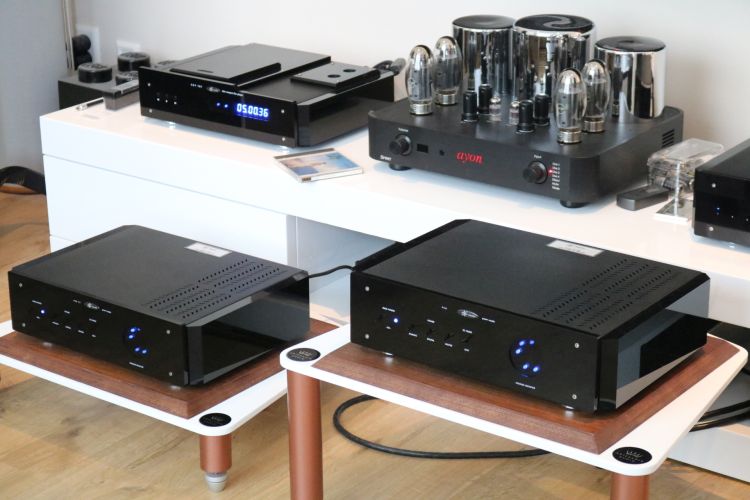
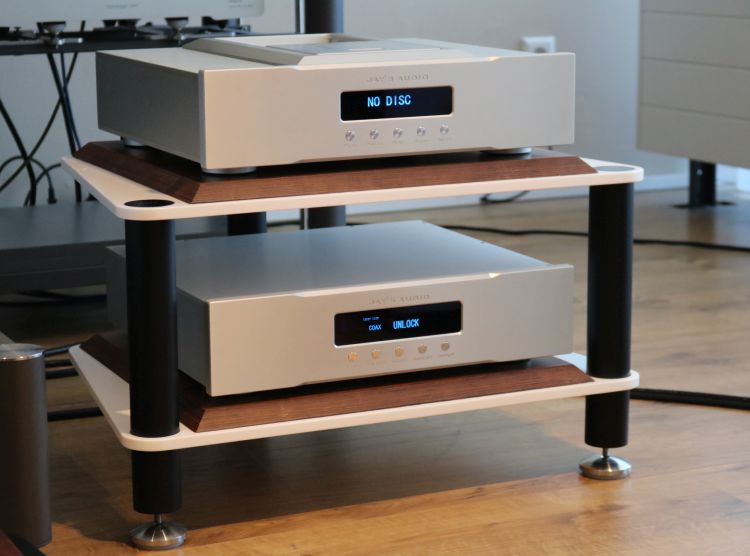
While hunting for a Wadia 861, I made a list using your info, VasiliTech from Belarus and some other sites and have only a few blanks left.
One of them is are DAC chips that are employed in the S7i (and also in 921 & 922).
Do you know what are the DACs in S7i and the DSP?
Cheers and thanks for all the work you put into these articles.
Hi Roman, I just checked some photos I made of the S7i’s inside and found that it uses four BB PCM1704’s (two per channel). The DSP is Wadia’s DigiMaster v2.5 but for the first time in Wadia history, the S7i also uses some secretive grey slabs of aluminum between the DACs and the output stage and I’m not sure what’s inside. Is it for the SwiftCurrent™ current to voltage conversion technology? Who knows.
I’m sure you are aware but just as a general disclaimer, please note that a DAC chip only makes for part of the CD player’s sound. Much of it is also shaped in the power supply, Current to Voltage conversion, filtering, over/upsampling, and output stage. The best proof for this is that many CD players use these DAC chips yet they all sound different, or at least none of them sound much like a Wadia.
Lastly please note that the S7i had firmware issues that made the drawer lock up, requiring a player restart. These were apparently later solved but I have no further information on that.
Thanks Christiaan,
The 1704s are 24 bit chips so this explains why it can do 24/96
Indeed:-)